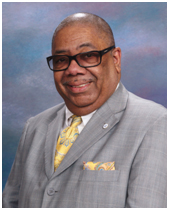
By Rev. Donald L. Perryman, Ph.D.
The Truth Contributor
Sometimes, it appears that we should worry more about how we split among ourselves and less about how [others] keep us divided. – Alvin Poussaint
At her first major meeting as chair last week, the vibrant and youthful Schuyler Beckwith received a fast-tracked education on the challenges she faces as the new leader of the Lucas County Democratic Party.
Party reorganization meetings can be tense and chaotic and, despite the potential for tension, the meeting began with an atmosphere of constructive discourse and forward-looking enthusiasm.
However, the atmosphere at this “new era conclave” shifted when controversy erupted over Shaun Enright’s appointment to the Party’s executive committee, a decision that reignited historical tensions within the Party. Evidently, Enright’s organization, Northwest Ohio Building & Construction Trades Council, had previously endorsed Ohio Representative Josh Williams, a Republican, which rekindled hard feelings.
For those who don’t know, factionalism here runs deep, going back to the Democratic Party’s implosion during the 2001 Toledo mayoral race. Key figures then pitted progressives such as the late Jack Ford, Jim Ruvulo, Peter Ujvagi, and Michael Beazley against a B-Team of “disaffected” Democrats that included Ray Kest, and team members John Irish, Domenic Montalto, Carty Finkbeiner and Sandy Isenberg.
Perhaps the rise of Beckwith’s Sky Nation and the leadership transition stirred the deeper undercurrents of a particularly divisive moment in 2001. During that time, the Party was sharply divided as long-time Democrats Jack Ford and Ray Kest both vied for the Toledo mayoralty, with the Party unable to present a united front.
Or perhaps, this recent change of the guard has reawakened the seismic shift that rocked the Party’s political landscape in 2005. That year marked the ousting of the A-Team, a dominant force for nearly three decades, during a crucial Party election that saw Sandy Isenberg triumph over Paula Ross, signaling a major transformation in leadership and Party dynamics.
Nevertheless, I have heard through the grapevine that the UAW labor union representing the modern A-Team is looking to secure more influence within the Party. Moreover, there does appear to have been some lingering bad blood between UAW leader Tony Totty and the Building Trade’s Shaun Enright.
However, if true, Enright may have merely decided to monitor the situation personally from the executive council’s perspective rather than through reports from his deputies.
Regardless, Beckwith has clearly amassed significant backing from allies who are committed to shielding her from the repercussions of the longstanding divisions she inherited.
A spokesperson authoritatively stated: “Shaun Enright is a good Democrat. He’s voted Democratic principles, he’s voted in the primaries, he’s supported people in this room and I think you’re not giving the whole story. Yes, he has a right to be on this executive committee.”
And with that, Beckwith’s coronation moved on flawlessly, enabling Sky Nation to fly without further controversy.
Yet, a larger question for Beckwith remains: Given the deep polarization affecting our nation, is crossing political boundaries acceptable? If so, how can crossing political boundaries enhance our collective situation?
“Sometimes you just have to be bold and know what’s right,” said one wise old former A-Teamer still jousting in local political trenches. “Nobody asked this body last night to endorse Josh Williams. We certainly need to get things done. That takes priority. I don’t think that it means that you’re disloyal because you endorse somebody from a certain party when you’re working together in the best interest of your constituents as well as your Party.”
For certain, Shaun Enright and other politicians have been effective by tempering partisanship with pragmatism. They know where the power is to protect their members.
Moreover, despite the prevalence of right-wing policy-making in Ohio and ongoing cultural conflicts, Ohio remains a non-right-to-work state. It’s been 15 years since the defeat of Senate Bill 5, and Ohio has steadfastly avoided adopting right-to-work laws. This enduring stance can largely be attributed to the unions’ considerable sway with Ohio Republicans, particularly the influence of the Building Trades. Their strategic alignment with Republican power has effectively safeguarded the interests of the Democratic Party and preserved the organizing rights of Ohio workers.
Therefore, in this crucible of leadership, Schuyler Beckwith “understood the assignment!” Her leadership role transcends mere crisis management, and she has plenty of support in that area.
Instead, her mission is to reshape the identity of the Democratic Party in Lucas County, merging the insights of experienced politicians with the fresh perspectives of the new generation. Her ability to forge a unified and progressive party will determine its success in navigating the complexities of today’s political arena.
As the meeting concluded, participants said there was a discernible sense of optimism.
“To me, it looked like a celebration of better things to come, and almost it was a transition,” said one of the attendees. “It was a jumping-off point; it was a transition from all the baggage that we’ve had over the last few years into something fresh and new.
There was enthusiasm, and there was discussion with each other. It was joyous, hopeful, and free. The moment was transient. There was a whole bunch of younger people in the room, a great mix of older and younger people.
Sky brought the next generation.
She’s done a really good job of respecting those who have come before her, but she’s also made it clear that change is available.
Contact Rev. Donald Perryman, PhD, at drdlperryman@centerofhopebaptist.org
